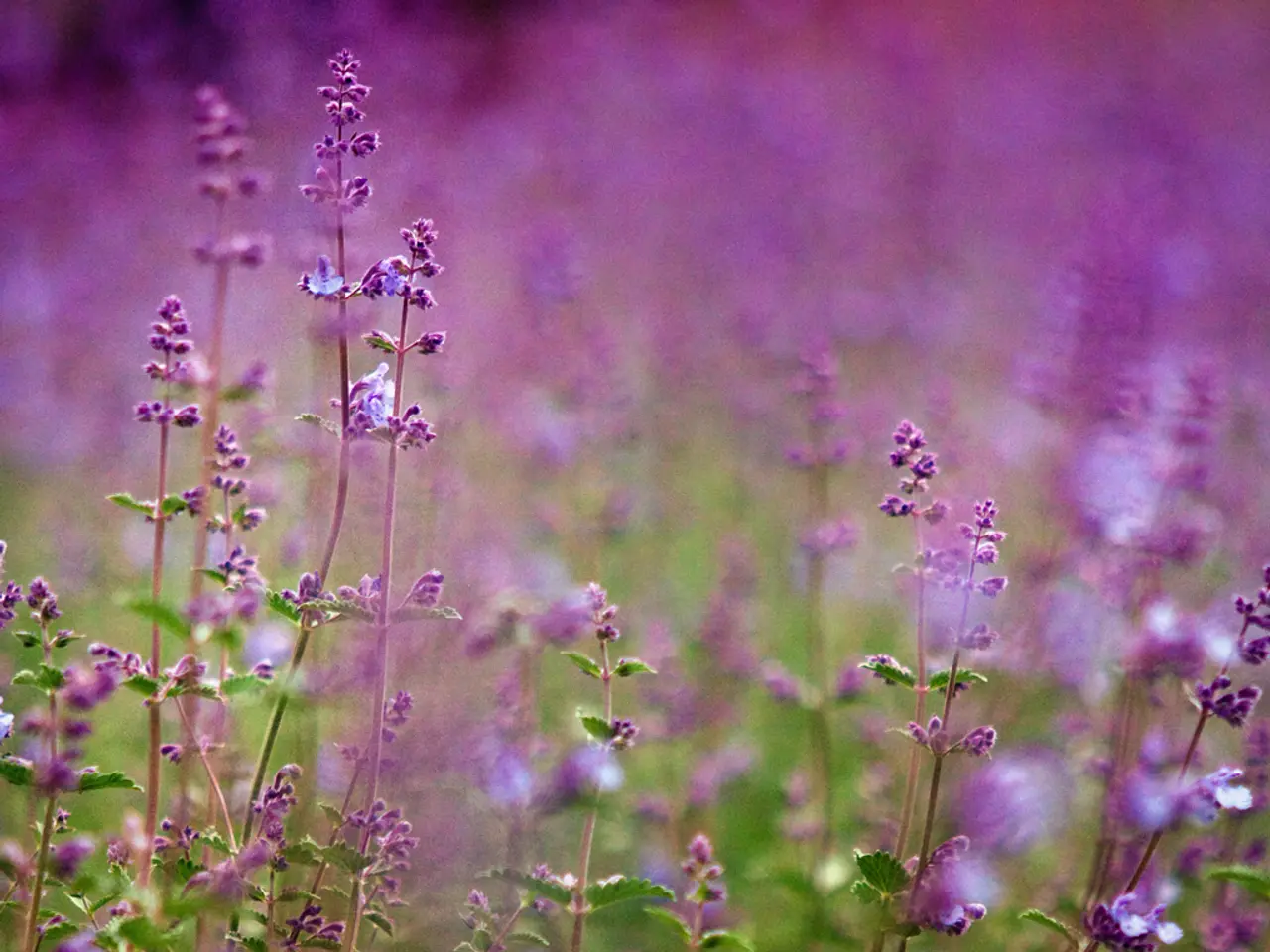**Resurrecting Wilted Lavender Shrubs: A Guide**
Lavender, a beloved plant known for its fragrant blooms and versatile uses, can sometimes fall victim to various issues, leading to a dying plant. While overwatering is a common culprit, there are other factors to consider.
Lavender plants, native to the Mediterranean, thrive in well-draining soil with a pH of 6 to 8. Testing your soil can help determine if adjustments are necessary. If the pH is off, amend with limestone to achieve the ideal range.
Sufficient sunlight is another essential factor. Lavender requires at least 6 to 8 hours of sun for optimal growth. Position your plant accordingly to ensure it receives ample light.
Watering is crucial, but it's essential not to overdo it. Mature lavender generally needs little watering, only during very hot periods. Overwatering can cause the inside of the plant to die, as observed in cases where the plant looks large but unhealthy inside. To water potted lavender, deeply soak the soil and wait until the top inch is dry before watering again. Use a soaker hose or water at the base of the plant to keep the foliage dry.
Poor soil drainage can lead to root rot, another common problem that can cause a lavender plant to die. To prevent this, loosen compacted soil with coarse sand or gravel and consider planting lavender slightly elevated to prevent waterlogging. Mulching with sand or gravel around the plant can also improve drainage and reflect heat, which helps lavender thrive and enhances bloom aroma.
Proper pruning is vital to prevent lavender from becoming too woody, which can weaken the plant and accelerate dying. Prune lavender annually and properly to promote bushy growth.
If root rot has set in, removing the plant, improving soil conditions, and replanting lavender in a well-draining spot is recommended.
Lavender may also suffer from diseases such as Lavender Shab, a fungal disease that results in twisted, brown stems and tiny black dots on the stem, or Septoria leaf spot, a disease caused by a fungus that weakens lavender plants in the late summer to early fall, fostered by humid, wet conditions.
Newly planted lavender may succumb to temperatures below 40 degrees F. (4 C.) at night. Cold temperatures can also affect potted lavender and should be protected when temperatures dip.
In conclusion, reviving a struggling lavender may involve cutting back dead or dying parts, improving soil drainage, reducing watering frequency, and ensuring the plant receives adequate sunlight and warmth. If root rot has set in, removing the plant, improving soil conditions, and replanting lavender in a well-draining spot is recommended. After saving a dying lavender plant, continue careful monitoring of moisture and light levels until the plant has regained its vigor.
For those interested in gardening, signing up for a gardening newsletter can provide access to gardening tips, videos, information, and a free e-book on how to grow tomatoes. New lavender plants should be planted in early to mid-spring to allow for acclimation before hot summer temperatures.
Growing lavender in pots requires special considerations, such as proper watering, soil consistency, sunlight, and potential fertilization. With the right care, your lavender plant will thrive and provide a beautiful display of fragrant blooms.
Gardening enthusiasts can learn more about lavender care through a home-and-garden newsletter, providing resources on how to grow the plant successfully. To ensure a healthy lavender lifestyle in a pot, consider factors such as well-draining soil, appropriate watering methods, and sufficient sunlight.
Proper gardening techniques, including soil testing, adjustments according to pH levels, and preventing poor soil drainage, can help revive a dying lavender plant. By taking the necessary steps to improve its environment, one can promote its growth and enjoy the delightful fragrance of lavender blooms.





